Guest Post: Censorship of Palestinians is So Normal, Even Antiracists Don’t See It by Nora Lester Murad
Folks, I’ve been reading and reviewing children’s books since 2003. And if I had to say the number of books I’ve seen for kids with a Palestinian focus, available here in the States in all that time, I could count the number on one hand. Today, Nora Lester Murad comes to talk to us about a topic many don’t want to discuss, and certainly not in a public forum. Nora is an adjunct professor of Humanitarian Affairs at Fordham University in the USA. She is also a writer and activist living in Palestine and her work currently focuses on promoting racial justice among communities in Palestine. She is the author of Ida in the Middle: a YA book about a Palestinian girl, and she is currently working with a group of teachers, authors and librarians on a project to evaluate the amount of children’s books and curricular materials available about Palestine.
I am honored to have her on the blog today. Take it away, Nora:
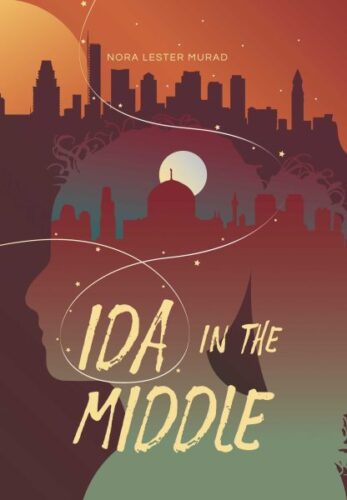
I started researching censorship of Palestinian children’s books out of concern that my forthcoming young adult novel, Ida in the Middle, could be attacked or banned because the protagonist is a Palestinian-American. Ida is an 8th grader who faces ridicule and bullying at school and finds her strength by connecting with the struggle for self-determination happening in Palestine. Ida’s experiences in her Massachusetts school are loosely based on my youngest daughter’s junior year about which she says, “I didn’t feel like they kicked me out because they had never included me in the first place.” I later spoke with many Palestinian kids with shocking stories of racism, exclusion and invisibility in US schools all of whom thought they were the only one – because no one talks about anti-Palestinian racism.
ADVERTISEMENT
ADVERTISEMENT
Palestinians aren’t on the radar of most advocates for marginalized books
What I’m finding in my research about censorship of Palestinians is concerning. Although advocates of intellectual freedom, freedom to teach and the right to learn stand up (appropriately so!) for books about Black, brown and queer communities, the intense, multilayered censorship of Palestinians goes virtually unchallenged – and, in fact, unnoticed. Simply put, Palestinians and their literature are invisible to organizations like the American Library Association, National Coalition Against Censorship, and the National Council of Teachers of English, among others. A good example of this is PEN America’s oft-cited report, America’s Censored Classrooms, which doesn’t even mention Palestinians, although there is a barrage of legislation targeting them, and overwhelming documentation of censorship of Palestinians.
For example, earlier this month, Independent Jewish Voices (IJV) released a detailed, 97-page study of harassment, intimidation and repression against Palestinians in education that includes interference in hiring, classroom surveillance, restrictions on campus groups, demands for the censure or dismissal of pro-Palestinian faculty and students, and obstruction of pro-Palestinian events. They found that the constant and increasing harassment creates a “chilly” environment which threatens academic freedom, muzzles scholarly production, obstructs academic careers, encourages mendacious and malicious discourse, and stifles legitimate protest. More than that, they paint a picture of life for many Palestinian teachers and students that is painful and unfair.
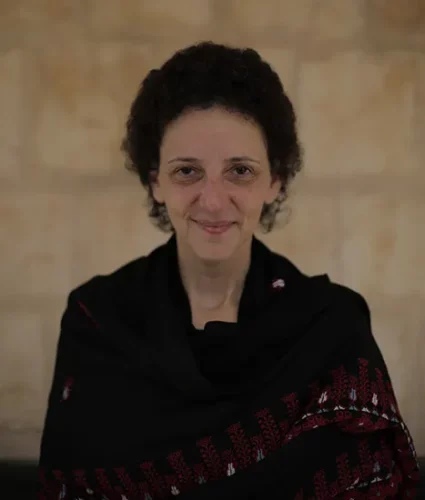
The IJV report focuses on Canadian higher education. Here at home, Palestine Legal, a Chicago-based nonprofit co-published a study with the Center for Constitutional Rights in 2015 called, “The Palestine Exception to Free Speech” showing the same tactics are used in the United States. In nearly 100 pages and with accompanying videos, they explore a range of silencing tactics that are pervasive across US higher education institutions, including monitoring and surveillance, falsely equating criticism of Israel with antisemitism, unfounded accusations of support for terrorism, official denunciations, bureaucratic barriers, administrative sanctions, cancellations and alterations of academic and cultural events, threats to academic freedom, lawsuits and legal threats, and more. In the US, as in Canada, simply being Palestinian seems a provocation, which is hard enough for adults, but imagine being a Palestinian student facing this type of racism in school?
Information about attacks on Palestinians in education is anecdotal but abundant
Although no one seems to be systematically tracking the impact of censorship of Palestinians in K-12 education in the US, there is abundant evidence of harassment aiming to censor Palestinian and pro-Palestinian voices. For example, the Liberated Ethnic Studies Model Curriculum Consortium (LESMCC) has been slapped with a lawsuit because of their inclusion of Palestinians in the curriculum, and teachers not limited to the LESMCC teachers are experiencing administrative harassment in the form of tens if not hundreds of public records requests, not to mention threats to individuals and institutions.
In a separate incident, Palestinian-American teacher, Natalie Abulhawa, was fired from a private, all-girls school called Agnes Irwin for social media posts that were nearly a decade old and were found on a known Islamophobic site, according to the Council on American Islamic Relations.
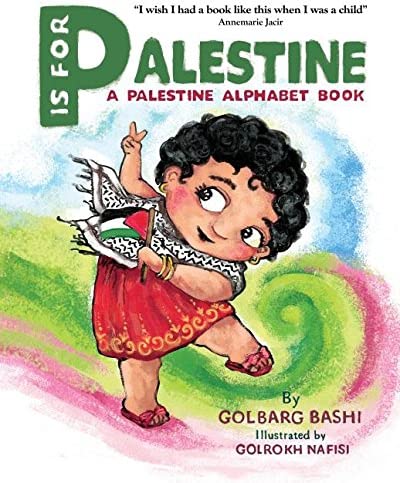
Attacks on Palestinian books also happen. In a well-known case, a NY bookstore was attacked for their support of the picture book P is for Palestine (Bashi Goldbarg, self-published), and a Hannukah reading of the book organized by anti-zionist Jews was attacked by right-wing Israel supporters.
More recently, Kayla Hoskinson, a librarian in Philadelphia was disciplined for an antiracist post that mentioned Rifk Ebeid’s picture book, Baba, What Does My Name Mean? (self-published) and references to Ebeid’s book and the works of Palestinian poet laureate Naomi Shihab Nye were censored.
Another recent library censorship case occurred in San Francisco over ideas about Zionism and racism. San Francisco Public Library canceled an art exhibit and public event when organizers refused to remove text that ACLU lawyers said was protected by the First Amendment. The library’s explanatory statement said: “… the Library retains the right to determine the suitability of any proposed exhibition to be included in the Library’s exhibition program. The Library also reserves the right to reject any part of an exhibition or to change the manner of display.” But if a library has the right to reject any part of an exhibition, they also have the right to include it, despite pressure from politically-motivated interest groups.
Librarian Kayla Hoskinson talks about the chilling effect of this kind of censorship.
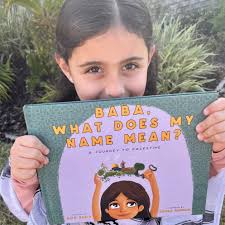
“Attacks against librarians and teachers for including Palestine in their curriculum are definitely noticed by our colleagues. Some are unafraid to move forward with me to plan and host programs about Palestine. More colleagues, though, see what happened to me and don’t want the trouble. Even if they agree, they know they will not be supported against attacks. ALA really needs to re-develop policies and guidelines about neutrality in the field.”
Very few children’s books about Palestine are being published
But when it comes to traditional bans–the listing of books that are forbidden in schools and libraries–attacks on Palestinian books seem more opportunistic and ad hoc rather than systematic and ambitious like the ones directed against Black, brown and queer books.
This may be because there are so few books about Palestine. For example, the Diverse Book Finder studied over 2000 picture books published since 2002 and found only 3% fell into the broad Middle Eastern category. How few of those are Palestinian?
In a study I’m currently doing with several Palestinian teachers to produce a framework that educators and librarians can use to evaluate books involving Palestine, we found that a full 40% of our sample of books about Palestine authored by Palestinians were self published, indicating that censorship is happening before publication. This means that fantastic children’s books like Tala Fahmawi’s self-published Salim’s Soccer Ball get only limited visibility and lack the library-attractive credibility that comes along with being traditionally published.
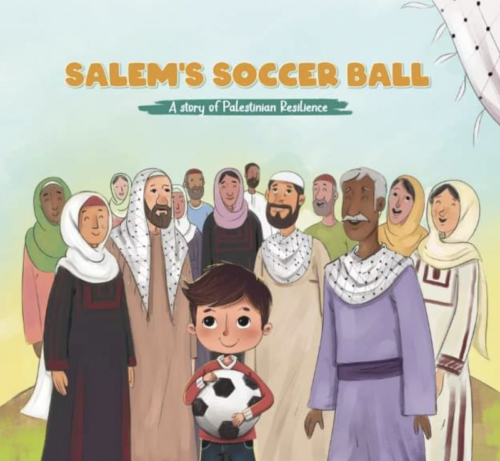
Sadly, the problem is not merely one of oversight or negligence. In a webinar called “Translating Palestine,” translator Sawad Hussain said she had been told outright by some editors that they are afraid to work with Palestinian authors lest they be seen as too political or publishing “too many Palestinian authors.” Translator Marcia Lynx Qualey said that even books accepted for publication are often “bulletproofed,” which she described as scrubbed of content Palestine’s opponents would claim is offensive.
Palestine is a taboo topic due to fear and politicization
My publisher, Interlink Books, founded by Palestinian-American Michel Moushabeck has provided a much-needed pathway for Palestinian books and books about Palestine to reach US readers, yet he too has faced challenges. Most recently, Malak Mattar’s Sitti’s Bird: A Gaza Story (2022) has been unable to get a single mention or review in trade publications and mainstream media, unlike all the other picture books he’s published. Moushabeck says, “It’s because it’s a Palestinian story of trauma. We knew this would happen because the same thing happens to all our titles written by Palestinians. Some editors do not assign books by Palestinians for review–especially ones they deem controversial or think can get them into trouble.”
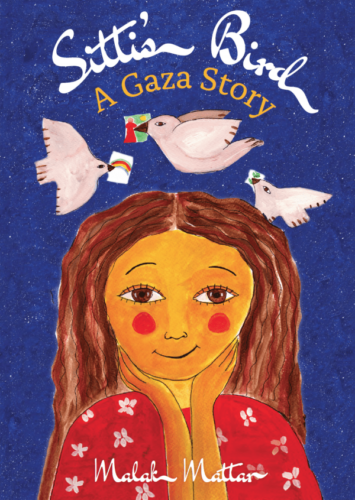
ADVERTISEMENT
ADVERTISEMENT
The consequences of the censorship of Palestinian children’s books goes far beyond the impact on Palestinian authors and Palestinian children. As the ALA’s Unite Against Book Bans campaign says, without books:
“Students cannot access critical information to help them understand themselves and the world around them. Parents lose the opportunity to engage in teachable moments with their kids. And communities lose the opportunity to learn and build mutual understanding.”
Applying principles of intellectual freedom, freedom to teach and the right to learn to Palestinian topics
For the ALA and other librarians and educators who advocate for intellectual freedom, freedom to teach and the right to learn, Palestine should be with others at the frontline of the struggle. Some even argue that Palestine is the litmus test of antiracists’ commitment to rights for all. For this reason, I hope organizations like the American Library Association, the National Coalition Against Censorship, PEN America, the NCTE and others who librarians and educators look to for leadership will become proactive in rejecting the violent silencing and criminalization of Palestinian voices. I hope they will step forward to demand intellectual freedom, the freedom to teach and the right to learn not only for some, but for those who most need to be uplifted in order to be heard, including Palestinians.
BIO
Nora Lester Murad is a writer, educator, and activist. She co-authored “Rest in My Shade: A Poem About Roots” with Danna Masad and edited “I Found Myself in Palestine: Stories of Love and Renewal From Around the Globe” (both from Interlink Books). Her young adult novel, “Ida in the Middle,” about a Palestinian-American girl’s search for belonging, will soon have curricular materials for 6th-9th grade (see www.idainthemiddle.com). While living in Palestine, Nora co-founded Dalia Association, Palestine’s community foundation, and Aid Watch Palestine, an aid accountability initiative. She now lives in Massachusetts where she organizes to expand the teaching of Palestine in schools, among other social justice issues. She is a policy member with Al-Shabaka: The Palestinian Policy Network and also teaches international humanitarian affairs. Nora blogs at www.noralestermurad.com.
Filed under: Guest Posts
About Betsy Bird
Betsy Bird is currently the Collection Development Manager of the Evanston Public Library system and a former Materials Specialist for New York Public Library. She has served on Newbery, written for Horn Book, and has done other lovely little things that she'd love to tell you about but that she's sure you'd find more interesting to hear of in person. Her opinions are her own and do not reflect those of EPL, SLJ, or any of the other acronyms you might be able to name. Follow her on Twitter: @fuseeight.
ADVERTISEMENT
ADVERTISEMENT
SLJ Blog Network
Magda, Intergalactic Chef: The Big Tournament | Exclusive Preview
Fifteen early Mock Newbery 2026 Contenders
When Book Bans are a Form of Discrimination, What is the Path to Justice?
ADVERTISEMENT








What an excellent post! Than you Ms. Murad and than you Betsy Bird for carrying it. For too long entities have hidden behind the charge of antisemitism to quash all criticism of Israeli policies that have become increasingly brutal. There is no room for antisemitism in civilized discourse. And Palestinian stories and self determination should also be considered valid in civilized discourse. We have to see all children’s backgrounds and cultures as valid. It’s only fair. I’d also recommend a book by Ruqaya’s Bookshelf called My Garden Over Gaza. It deals with the very real reality of a little girl trying to grow her crops in Gaza.
Thanks for your support and your recommendation of My Garden Over Gaza. I’ll look for it!
Well, I did not expect to cry this morning. Seeing an article in School Library Journal that sheds light on the censorship of books by and about Palestine in publishing, names something so many of us have experienced for years. I can’t tell you what it feels like to have these truths validated in a mainstream publication and spoken out loud. Thank you to Nora Lester Murad, The Niblings, School Library Journal, and Betsy Bird!
It means a lot to me that you felt heard by my article. It’s hard to show people what erasure looks like because, by definition, there’s nothing to see. But it has to be seen so people can stand up for what’s right. We’ll keep chipping away at it.
It’s fascinating to see this, I had looked for resources on Palestine about 3 or 4 years ago for a student’s research project and had trouble finding more than I think 2 books solely about Palestine at the time.
Monica, I’ve tried to collect as many good teaching resources as I can to make it easier for teachers like you to bring Palestine into the classroom. Check out the teaching resources page at http://www.idainthemiddle.com and scroll down to the spreadsheet. Let me know if there’s something missing that you recommend. And sign up for my newsletter if you want to be notified as new resources are added.
Thank you, Betsy, for your courage in posting this article. And thank you, Nora, for this superb piece. One aspect of the ignoring or dismissal of books about Palestinians that is not mentioned is the apparent requirement by publishers that such books be even-handed, showing “both sides.” (The few books I’ve seen that include Israeli Arabs, including my own WATCH OUT FOR FLYING KIDS, are scrupulous about being half-Jewish/half-Arab, despite the fact that hardly any books about Israel or Israeli Jews show the Palestinian side. Yes, there are two sides to every conflict but, as you rightly and convincingly argue, one side gets all the light.
Thanks for this, Cynthia. I’ll check out your book! I’ve got another article percolating about both-sideism. I think it’s more damaging that most people think.
Cynthia, I am surprised that you would state as fact that “hardly any books about Israel or Israeli Jews show the Palestinian side.” I keep an extensive bibliography of children’s and YA books about this subject, and there are in fact many books that do that – and many of these are by Israelis.
The best example is Pnina Moed Kass’s Real Time, a second-by-second record of a bus bombing in Israel during the Second Intifada (published in 2004, during those events). Despite the fact that the author never minimizes the suffering of the victims of this horrific terrorist act, she somehow manages to paint the young suicide bomber and his life with real empathy. She never, ever dehumanizes him. Valerie Zenatti’s Bottle in the Gaza Sea (2008) imagines an email correspondence between an Israeli Jewish girl and a young man her age in Gaza; each of them honestly states their perspective, so you see both sides. The female protagonist of Zenatti’s When I was a Soldier (2005) begins a journey with a pro-Arab, left-wing perspective, then encounters the experience of an older lady sitting beside her on the bus, a survivor of the Holocaust. And how about Anna Levine’s Running on Eggs, set in Israel between a kibbutz and an Arab village, which posits a developing friendship between an Israeli Jewish and Israeli Arab girl on the same running team? The novel is about the resolution of a conflict between their two communities by clearing up misunderstandings. In Marilyn Levy’s Checkpoints, also set in Israel, two girls, Arab Maha and Jewish Noa, become friends; the reader gets to see the hardships caused for residents of East Jerusalem subjected to checkpoints, and also the effect of the Passover hotel bombing on Jews. There are many, many more of these – Sharon McKay’s Enemy Territory, The Dog of Knots by Kathy Walden Kaplan, Crescent Star by Nic Maes, Samir and Yonatan by Daniela Carmi, Wishing Upon the Same Stars by Jacquetta Nammar Feldman, and Ronit and Jamil by Pamela Laskin. In every one of these, the (mostly Jewish, among whom many are Israeli) author bends over backwards to show both sides. This effort – to empathize with the Other – is conspicuously lacking in the books I’ve encountered promoting the Palestinian cause. A good example is Elizabeth Laird’s A Little Piece of Ground, which dehumanizes Israeli soldiers using animal imagery (their tanks “squat” and resemble “green scaly monsters, crouched waiting to crawl back up the hill.”) Other pro-Palestinian books, like Baba, What Does My Name Mean, simply erase Israel (from their maps) or deny the problem of terrorism, like P is for Palestine, with its infamous line “I is for Intifada,” which defines “intifada” as “standing up for what is right, if you are a kid or a grownup.” Really? In the Second Intifada, 1000 Israelis were killed and many maimed and injured. Does the omission of that inconvenient truth show empathy with the Other?
Thank you for these books, Marjorie.
Rachel, you can read my reviews of A Little Piece of Ground (Elizabeth Laird) and of Wishing Upon the Same Stars (Jacquetta Nammar Feldman) on the website of CAMERA.org Look under Reviews – Books
I am unsure of the exact focus of this post. Is it that there are not enough books about Palestinian-Americans or that there are not enough books set in Israel/Palestine featuring Palestinians?
And of course, this post has been superseded by the fact that Sitti’s Bird was just reviewed in the NYTimes (doesn’t get much more mainstream than that!). There is also the book Wishing Upon the Same Stars, which does present “both sides” in that it features an Israeli-American child and a Palestinian-American child.
Hi Rachel, there are not enough books about Palestinians or Palestine advancing Palestinian narratives, and that’s because of various kinds of censorship. Yes, it’s great that Sitti’s Bird got a mention (while this piece was in publication), but that just proves the point — ONE mention!
One more thought – sorry to put it in a separate comment.
Are other Arab nationalities more represented than Palestinians? That is, when Arabs appear in Children’s literature, are they specifically identified by nationality or merely by ethnicity (Arab) or religion (Muslim, Christian, Druze, other)? I do not recall seeing many books about Iraqis or Lebanese people either.
I studied Palestinian children’s books so don’t feel qualified to comment about other Arabs. I suspect, though, based on commentary I’ve read, that Arabs as a whole and Muslims as a whole are underrepresented. But there is still a special kind of censorship that has to be named, which is reserved for Palestinians, due to the erroneous perception that anything good for Palestinians is bad for Jews.